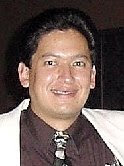
Above photo is of Willy Shine from contemporarycocktailsinc.com
(by Shanken News Daily) Bars and restaurants are taking a closer look at cost efficiencies in the face of a tough economy, re-examining operations to get the most out of their businesses.
Willy Shine, who co-founded New York City-based Contemporary Cocktails Inc. with fellow mixologist Aisha Sharpe, has seen his share of missteps in his roughly 20 years of experience behind the bar. Shine has worked on drinks programs for venues including Pranna restaurant, 1534 bar and The Royalton New York hotel in New York City, as well as Tao Beach lounge in Las Vegas. “The most common issues are inventory control and managing a respectable cost-of-goods percentage every month,” he says.
Companies like Louisville, Kentucky-based Bevintel focus on these issues. “Bars and restaurants lose most of their money by over-ordering, over-pouring and not maintaining security on liquor,” says company CEO Dan Smith, who’s worked with Cheers in Boston and national chains like T.G.I. Friday’s, Applebee’s and Marriott International. “We scan and analyze every bottle in the entire facility. We can tell venue owners exactly how much is being used, sold and purchased, so they can make accurate cost assessments. We usually find thousands of dollars in loss.”
For larger venues, Contemporary Cocktails uses hand-held inventory management system AccuBar, which measures and displays the amount of spirits and wines remaining in bottles while also ordering out-of-stock items by scanning bar codes on empty bottles. Clients have seen a 50%-80% reduction in labor hours spent maintaining inventory, AccuBar claims.
On inventory levels, Shine stresses ordering light and knowing a venue’s theme and demographic. “If it’s a high-volume tourist bar, you’ll probably want to carry more variety compared to a venue focused on cocktails,” he says. Bevintel’s Smith agrees that overstocking is a must-avoid. “Distributors will sometimes offer (volume) discounts on certain items, but is the bar using that product at a speed that makes sense?” he says. “If not, then clearly there’s money sitting on the shelves.”
Proper staff training is another key component of cost-efficiency. Having bar staff measure ingredients with jiggers can keep costs down while also improving quality. “With the increased prominence of cocktails, it’s important to portion a drink correctly and consistently maintain quality,” Smith says.
Bar organization also plays a huge role in cost-efficiency. “If a bar isn’t arranged as well as it could be and staff can’t quickly find bottles, they’ll be grabbing them, dropping them and breaking them,” Smith says. Contemporary Cocktails’ Shine agrees. “Venues lose the most money through glassware breakage, over-pouring and spillage,” he says. Setting up bar stations for efficiency and speed can remedy many of these issues. “A bartender shouldn’t have to take more than one or two steps to reach everything he or she needs,” Shine says. “Combine steps or batch certain cocktails at the service bar.”
Restaurateurs in particular need to keep an eye on beverage alcohol waste. “When a venue’s sales are 80% food and 20% bar, operators often ignore the bar,” Smith says. “We just worked with an accomplished restaurateur who has 12 to 15 restaurants, and we found $20,000 worth of loss on a weekly basis—that’s $1 million a year in alcohol losses.” Contemporary Cocktails’ Shine agrees that paying close attention to the bar sales is integral. “You make your money on the bar, so manage it,” he says. “Set it up to succeed.”


No comments:
Post a Comment